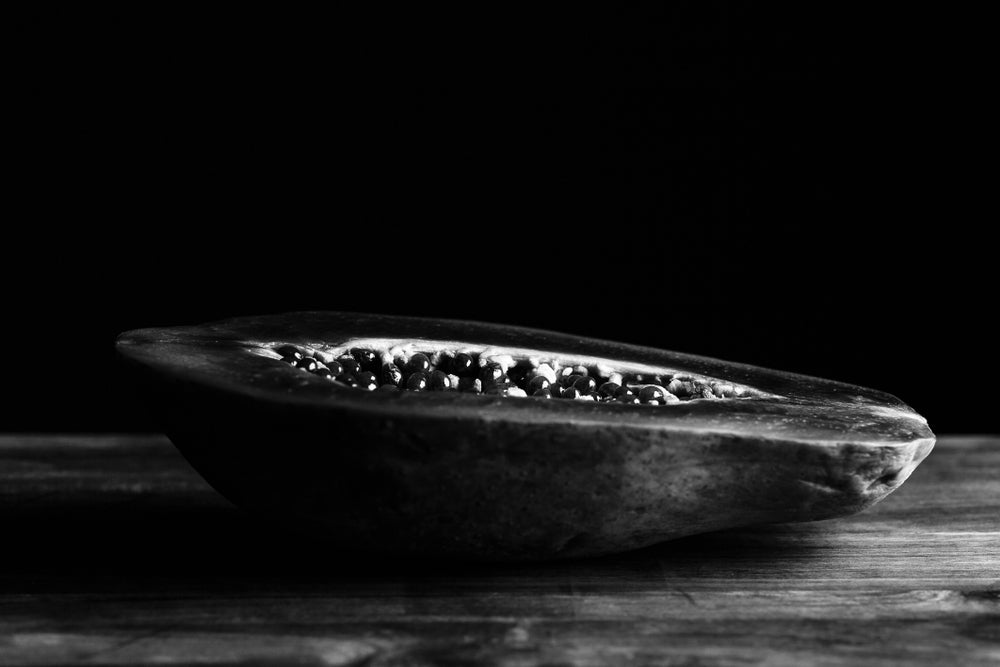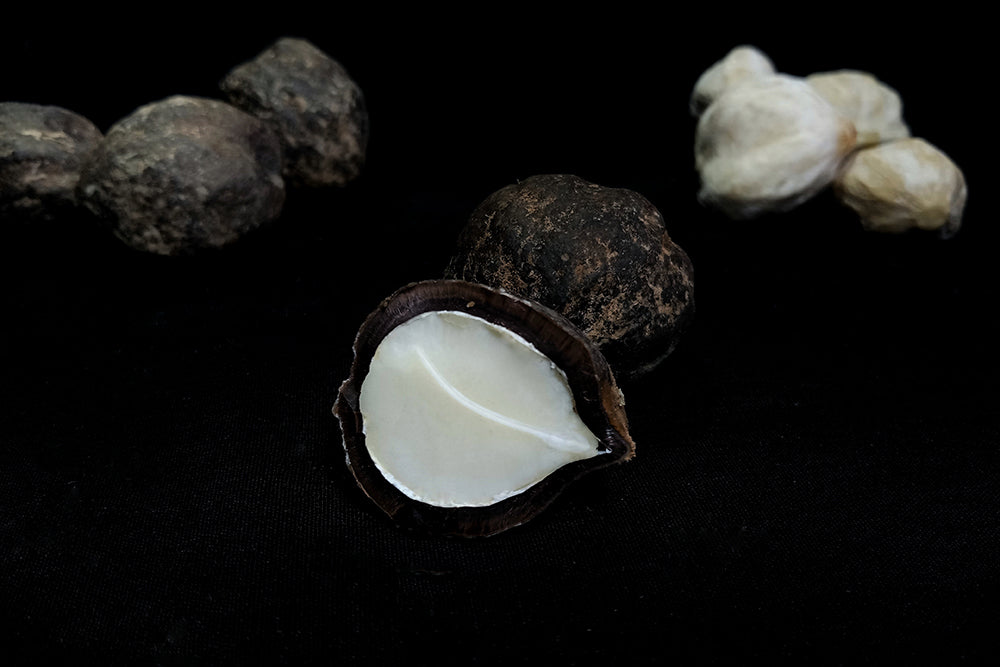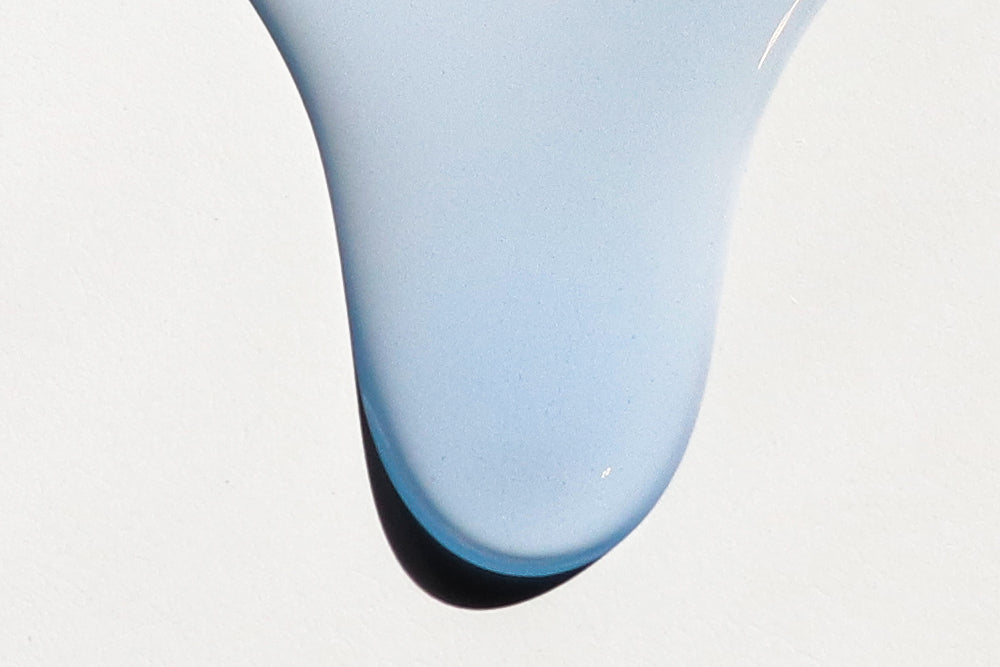
ingredient focus: papaya seed oil

the bottom line
Carica papaya, or papaya, is a tropical plant species possessing various chemical compounds with significant antioxidant properties, including caffeic acid, myricetin, rutin, quercetin, α-tocopherol, papain, benzyl isothiocyanate, and kaempferol. Although many fruits possess benefits for skin health, the papaya fruit is one of the few that layers activity into every part of it, including its peel, fruit, and seed. From moisturization to exfoliation and fighting inflammation, this unassuming fruit has it all. Read on to learn more about the many benefits of papaya.
first layer: the leaves
Extracts from the papaya leaf show remarkable anti-inflammatory and antioxidant* activity as well as enhanced synthesis of type I collagen*. Type I collagen provides the structural support and scaffold of bone, skin, tendons, blood vessels, and skin. Oral extracts of papaya leaf have also demonstrated improved skin moisturization, elasticity, and surface smoothness in human volunteers.
second layer: the fruit
The papaya fruit itself contains the proteolytic enzymes papain and chymopapain, which help to break proteins down into smaller fragments called peptides and amino acids. Although papain is known for its use as a meat tenderizer, it is also a natural exfoliant which is useful in skin rejuvenation to soften the skin’s surface. Unripe papaya pulp in particular has exhibited marked anti-inflammatory, antioxidative, and wound healing properties, especially when combined with selenium.
third layer: the seed
Papaya seed oil benefits for skin include superior moisturization. Oil derived from the papaya seed contains a high concentration of oleic acid, an essential fatty acid with superb regenerating properties. Oils higher in oleic acid, such as almond, jojoba, soybean, and avocado, tend to create an occlusive* layer which traps moisture beneath it, providing benefits for mature and dry skin. The papaya seed oil comedogenic rating is 2-3, indicating that it will not clog pores in the majority of users. Other benefits of the seed include improved wound healing, with increased epithelial thickness, collagen formation, and faster wound contraction.
fourth layer: how we do it
we think that the best way to use papaya seed oil is to combine it with other beauties, as we’ve done in our blue lotus body oil. we’ve layered papaya seed oil with kukui nut oil and squalane into a body oil to help soothe irritated skin. Yuzu and blue yarrow essential oils provide a grounding element to this blue lotus oil. The oil is readily absorbed, leaving a soft finish and healthy sheen.
references:
- Pazyar N, Yaghoobi R, Rafiee E, Mehrabian A, Feily A. Skin wound healing and phytomedicine: a review. Skin Pharmacol Physiol. 2014; 27:303-10. doi: 10.1159/000357477. Epub 2014 Jun 27. PMID: 24993834.
- Pandey S, Cabot PJ, Shaw PN, Hewavitharana AK. Anti-inflammatory and immunomodulatory properties of Carica papaya. J Immunotoxicol. 2016; 13: 590-602. doi: 10.3109/1547691X.2016.1149528. Epub 2016 Jul 14. PMID: 27416522.
- Kong, Y.R.; Jong, Y.X.; Balakrishnan, M.; Bok, Z.K.; Weng, J.K.K.; Tay, K.C.; Goh, B.H.; Ong, Y.S.; Chan, K.G.; Lee, L.H.; Khaw, K.Y. Beneficial Role of Carica papaya Extracts and Phytochemicals on Oxidative Stress and Related Diseases: A Mini Review. Biology 2021; 10: 287. https://doi.org/10.3390/biology10040287
definitions:
antioxidant: an antioxidant is a compound that inhibits oxidation. free radicals create oxidative stress and an inflammatory response which in turn can damage DNA and result in injury to the epidermal and dermal layers of the skin. in the skin, this manifests as premature aging with decreased elasticity leading to increased wrinkling, age spots, and decreased skin tone. antioxidants stabilize free radicals, which in turn limits their ability to damage the body. some of our favorite ingredients are notable for their antioxidant effects, including elderberry, plum, and lychee.
collagen: a fibrous protein that forms part of the dermal matrix, connective tissue, cartilage, and bone
occlusive: an occlusive ingredient provides a protective seal over the skin which prevents the loss of hydration into the environment. occlusives also help to keep irritants from entering the skin.
for more beauty terms, visit the glossary.
faq's:
what is papaya seed oil good for?
papaya seed oil is especially indicated for its moisturization, anti-inflammatory and anti-oxidant properties.
what is the best time to use papaya seed oil?
the perfect time to use papaya seed oil is after bathing, when skin is still slightly damp. the oil will be absorbed readily into skin to provide its soothing and hydrating benefits.
does papaya seed oil provide any improvement in scarred and damaged skin?
we haven’t found any data to indicate that papaya seed oil improves scarring. however, as an anti-inflammatory and antioxidant, it can possibly be used to limit excessive inflammation which in turn can lead to hypertrophic scarring and keloid formation.
is papaya seed oil an acne treatment alternative?
again, there’s no data to indicate that papaya seed oil can be used to treat acne. nonetheless, its anti-inflammatory properties in combination with its low comedogenic rating indicate that it should help to soothe irritated skin, rathet than exacerbate it.



leave us a comment
This site is protected by hCaptcha and the hCaptcha Privacy Policy and Terms of Service apply.